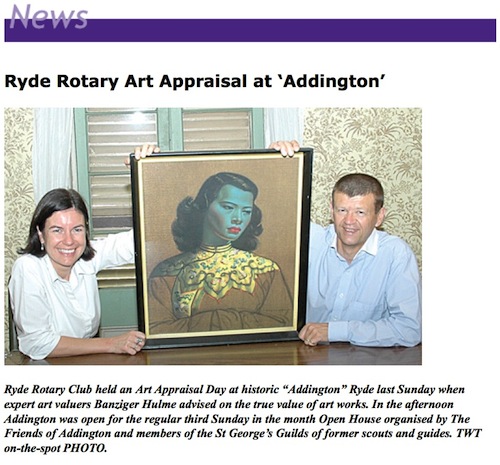People from all walks of life can find themselves with a piece of valuable fine art to sell, and for a number of different reasons. It’s certainly exciting to anticipate the potential windfall ahead, as you start researching your painting’s pedigree.
As with any unfamiliar financial field, this is a transaction with risks for the first-time seller. It’s easy to lose money by selling art below market value, or to sell in haste for the wrong reasons. Unfortunately, online scams are all too common in the art industry, with persuasive but fake buyers notorious for rushing sellers into poor decisions, such as shipping their painting in good faith, in return for cheques that bounce.
It’s worth spending time doing some careful homework on your piece or getting professional advice, before accepting a below-market offer or one that is most likely too good to be true.
The who and where of selling fine art
Some of the typical reasons people sell art they have acquired are:
- To use the proceeds of one piece of art to fund the purchase of another
- When art is left to beneficiaries of a deceased estate
- As part of a divorce settlement
- When downsizing to a home with less display space for paintings
- To pay off a debt
- When a company moves to smaller premises
The four most common ways to sell paintings today are by private sale, by consignment to a gallery or art dealer, on EBay, or at auction. Your choice will depend on convenience and timing and no particular method of selling art is particularly better or more secure than another. It doesn’t matter where your buyer comes from, as long as you are equipped with verification of a painting’s true market value before accepting their offer.
Valuation traps
For art, there’s no standard economic ‘system’ when it comes to pricing. A painting can’t be assessed in the same way as other domestic assets – such as cars or boats – for example, by using insured value as a guide.
Art’s value is largely influenced by ever-changing global, cultural and social influences. These are just a few of the critical inputs to final value with the potential to boost your investment well beyond a painting’s condition, age or appearance.
While auction houses can provide you with estimates, it’s important to remember that their figures are based almost exclusively on recent sales history from within their individual establishment. By contrast, an art appraisal considers auction sales as one element within a bigger picture. Professional valuation takes into account the art market’s size and most importantly, its current activity level across the board.
Fine art valuers are aware of the genre’s historic trends and multiple other factors involved in a holistic assessment. The full report you receive, outlining those inputs and more, is evidence of the real value of your item.
A fair price for your painting
If you’re in the fortunate position of having a work of fine art to sell – congratulations. This can be a time of high emotion and expectation, but one of liability, too. To really prosper from selling a painting – or to avoid disappointment from overly high expectations – you need to do more than rely on hunches, guesswork or family myths.
Having a professional appraisal and a documented report provides the peace of mind to ensure a fair price. Find out more about our art appraisal service, or call us on (02) 9977 7764 to discuss how our skills and networks in this intriguing field can help you make informed decisions at this important time.




